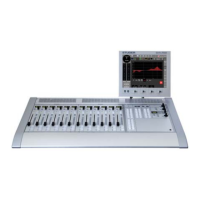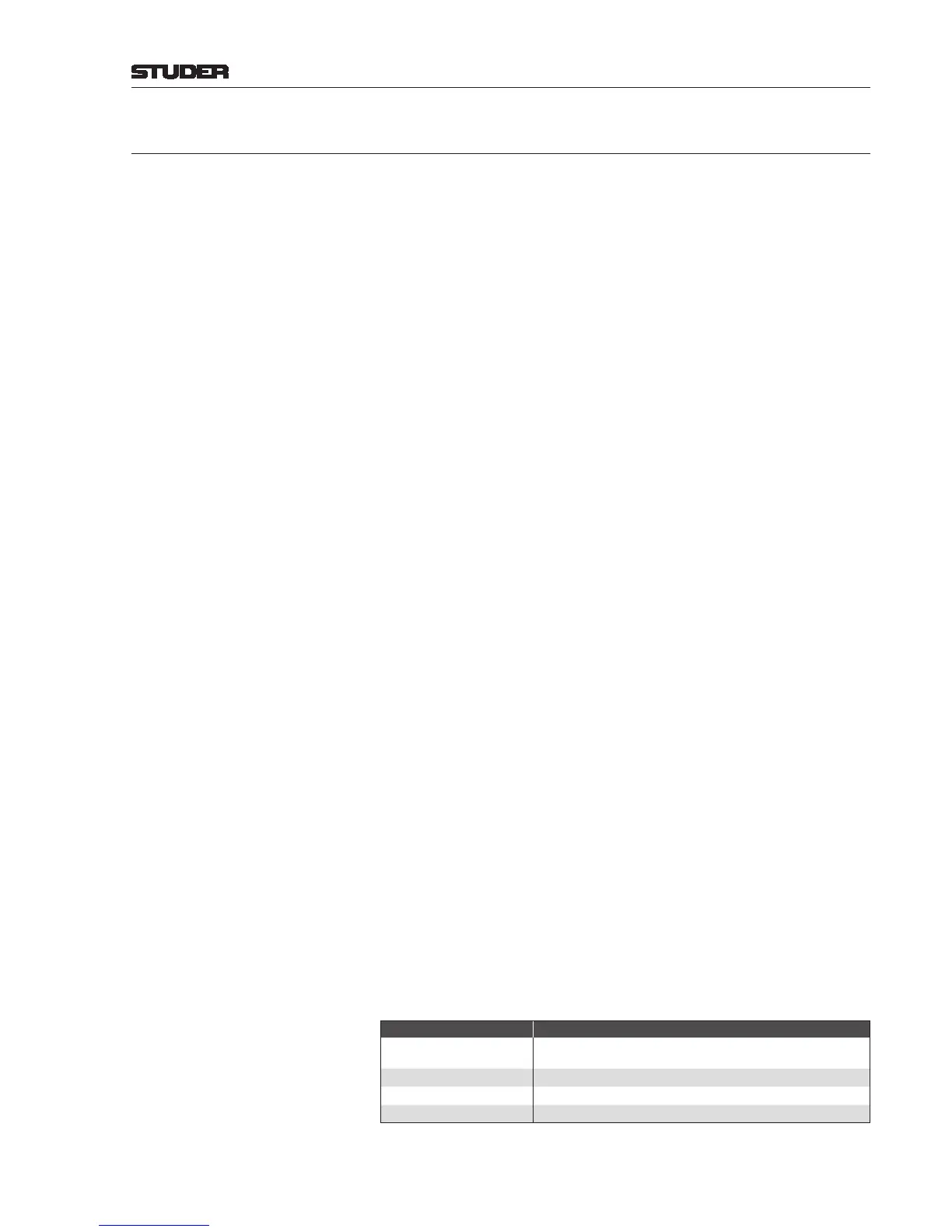OnAir 2500/OnAir 3000 Digital Mixing Consoles
Conguration 6-35
Date printed: 22.07.08
SW V3.0
6.5.20 I/O Sharing (Option)
I/O sharing allows accessing any signal (input, master, PFL, monitoring, etc.)
of one system by another one within the same controller network. When con-
necting several systems, some additional things must be considered during
conguration:
• Hard-wired (“physical”) connections between the SCores (MADI, ADAT,
AES/EBU, or even analog) must be established.
• These physical connections must be dened within in the system, because the
system just needs to know which outputs and inputs are linked through hard-
wired connections. This is performed in the conguration tool of the target
system (see chapter 6.5.20.1).
• Logical connections may either be dened as static (i.e. permanently reserved
for a certain signal) or dynamic (i.e. used by the system only as long as
required, which is more economical).
• A simple point-to-point conguration called “single-step I/O sharing” (as
shown in the rst example below) only needs logical connections to be dened
(see chapter 6.5.20.2).
• In larger, “two-step I/O sharing” congurations, Net inputs represent objects
in the star system that provide signals (e.g. Logical Input A) from the
source system to the target systems connected to the star system, as shown
in the second example below; Net inputs are dened according to chapter
6.5.20.3.
• To make things easier :-) different systems may act as star system simultane-
ously; in the second example below, Target System 3 also acts as a Star System
by providing the Logical Input B of the (pale) Source System 7 to Star System
2 – which, in this case, acts just as another Target System. In other words:
Each system may be Net Source, Star, and Net Consumer system at the same
time.
Glossary: Physical Connection Hard-wired connection between two SCores; for these, MADI, ADAT, AES/
EBU, or even analog connections may be used.
Logical Connection Connection between two SCores running on a hard-wired Physical Connec-
tion; may be dened as static (permanently reserved) or dynamic (used by the
system only as long as required). For Net Inputs, only static Logical Connec-
tions are allowed.
Logical Input The term Logical Input not only comprises the audio signal of this input but
also its signal processing parameters, such as EQ, lters, dynamics, etc.
Net Input Object on the Star System that is provided to other systems connected to the
Star System.
Net Source Object on the Source System that has specied a local source (e.g. input,
master, external PFL input, monitoring source, etc.).
Net Consumer Object on the Target system to which a mono or stereo signal must be assigned
(e.g. input, master, external PFL input, external monitoring source, etc.).
Net Consumer Active A Net Consumer is called active as long as it is using the allocated Net
Source.
Consumer Type: is active if the corresponding Net Consumer is:
Net Logical Input
assigned to a channel strip, or selected as a monitoring source, or
assigned to a logical output via output routing
Net Ext. Monitoring Source
selected as a monitoring source
Net Ext. PFL
switched to at least one PFL bus
Net Talkback
switched to at least one talkback destination

